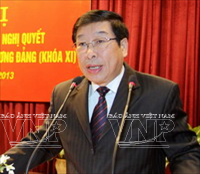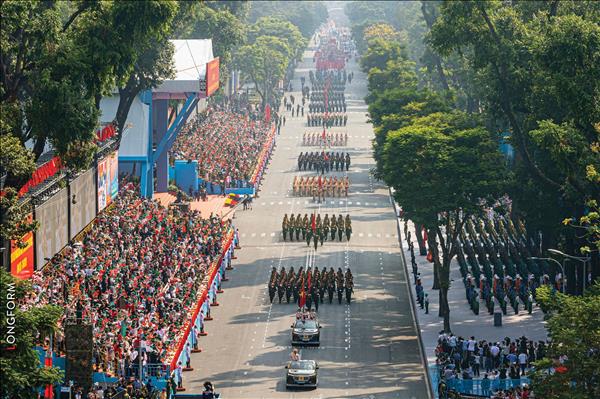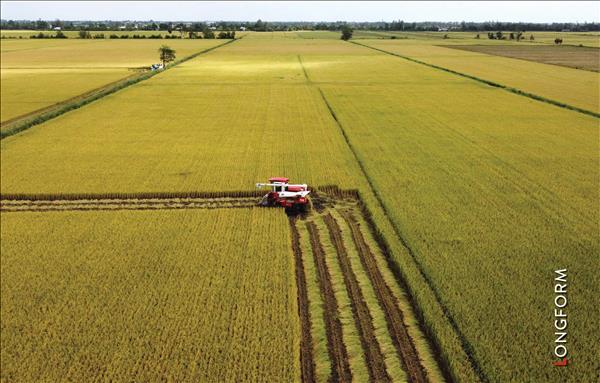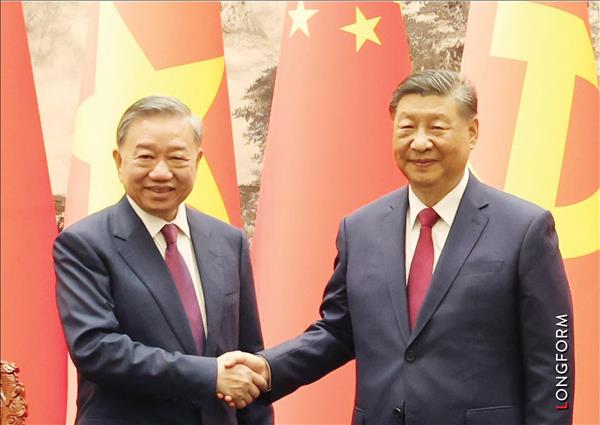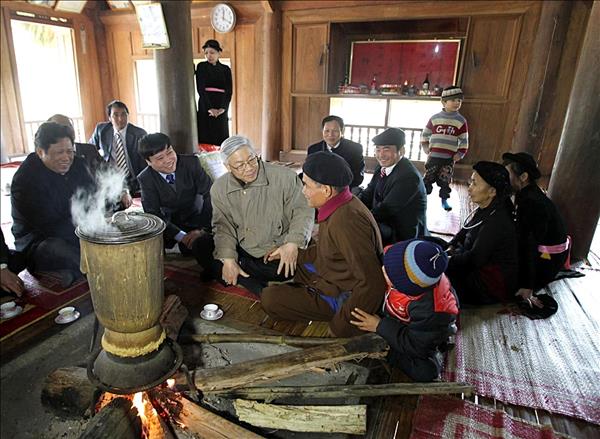On November 28, 2013, with nearly 98% of votes in favour, the 6th session of the 13th National Assembly officially approved the amended Constitution of the Socialist Republic of Vietnam that took effect on January 1, 2014. Related to this issue, Associate Professor Dr. Le Minh Thong, Vice Chairman of the National Assembly’s Committee for Legal Affairs and deputy head of the Editorial Board of the Committee on Drafting Amendments to the 1992 Constitution granted an interview to Vietnam News Agency.
Amendments to Vietnam’s 1992 Constitution introduce a number of new legal regulations, NA Law Committee Vice Chairman Le Minh Thong has said.
According to Thong, the revised Constitution is divided into 11 chapters with 120 articles (one chapter and 27 articles fewer than the previous version). Repeated content has been cut while unclear articles have been clarified.
The structure of the updated Constitution has been made clearer, especially the articles on the rights and obligations of citizens, Thong said.
He claimed that this restructuring demonstrates the determination to improve the political system so that it better suits economic renewal.
He said that the new document clearly states that the Socialist Republic of Vietnam is governed by law and mastered by the people.
It also elucidates the position of the Communist Party of Vietnam (CPV) as a vanguard of the whole nation. For the first time, the Constitution clarifies the responsibility that the CPV bears as a ruling party. With this content, the Party’s leadership and the role of Party member have been further enhanced, Thong said.
Thong declared that the amended Constitution manifests the ownership of the people who practice their power either directly or through the National Assembly, the People’s Council and other representative agencies.
Meanwhile, the document also clearly specifies human rights and supplements previous content related to the rights of citizens – the outcomes of the country’s human development efforts during nearly 30 years of renewal, he said.
According to Thong, the revised Constitution is divided into 11 chapters with 120 articles (one chapter and 27 articles fewer than the previous version). Repeated content has been cut while unclear articles have been clarified.
The structure of the updated Constitution has been made clearer, especially the articles on the rights and obligations of citizens, Thong said.
He claimed that this restructuring demonstrates the determination to improve the political system so that it better suits economic renewal.
He said that the new document clearly states that the Socialist Republic of Vietnam is governed by law and mastered by the people.
It also elucidates the position of the Communist Party of Vietnam (CPV) as a vanguard of the whole nation. For the first time, the Constitution clarifies the responsibility that the CPV bears as a ruling party. With this content, the Party’s leadership and the role of Party member have been further enhanced, Thong said.
Thong declared that the amended Constitution manifests the ownership of the people who practice their power either directly or through the National Assembly, the People’s Council and other representative agencies.
Meanwhile, the document also clearly specifies human rights and supplements previous content related to the rights of citizens – the outcomes of the country’s human development efforts during nearly 30 years of renewal, he said.
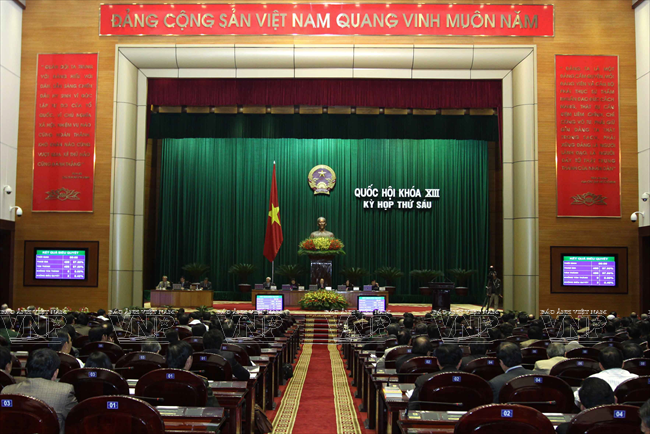
On November 28, 2013, the National Assembly delegates approved the amended 1992 Constitution
of the Social Republic of Vietnam with 97.59% of votes. Photo: An Dang – VNA
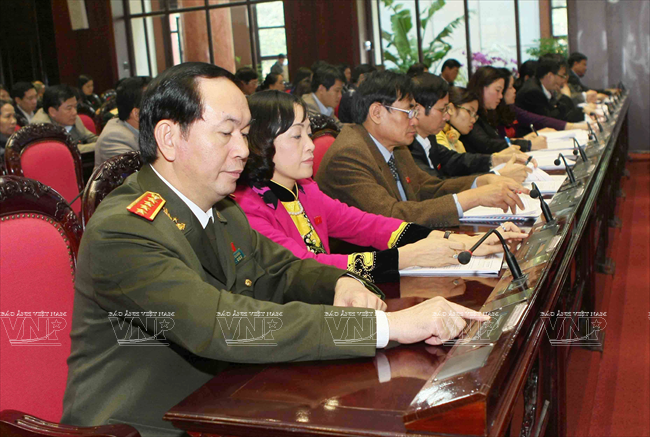
The National Assembly delegates press the button to approve the amended 1992 Constitution
of the Socialist Republic of Vietnam. Photo: Phuong Hoa – VNA
of the Socialist Republic of Vietnam. Photo: Phuong Hoa – VNA
Regarding socio-economy, the amended Constitution merges two chapters on economy and socio-culture, science, education and technology into one chapter, highlighting the close connection among the issues, showing the nature of Vietnam ’s economy as a market-based one following the socialist orientations, he cited.
Notably, the document does not list all the economic sectors, but still confirms the key role of the State-owned sector.
Regulations on land issues are also one of the new features of the amended Constitution. The document said land comes under ownership by the entire people, while making clearer land retrieval regulations, Thong underscored.
On the State apparatus, the document basically inherits the State organisation model mentioned in the old version, but better explains the principle that State powers are unified and decentralised to State bodies in the exercise of their legislative, executive and judiciary powers.
The revised Constitution also regulates the organisation of the court system, with the people’s procuracy playing the role as a constitutional basis for judiciary reform, he said.
One of the important highlights of the new Constitution version is regulations on local government. The document regulates administrative territorial units, while adding important contents on exclusive administrative economic units. It underscores the necessity to collect local residents’ opinions on the merging and dividing of administrative territorial units in accordance to the law, the NA Law Vice Committee Chairman said.
Other new content includes detail about the dependent institutions of the National Election Concil and the State Audit, he noted. Also, for the first time Vietnamese has been confirmed as the national language.
He stressed that it is obvious many opinions were absorbed, many were partly absorbed and many were ignored during the official feedback process. He promised that opinions will continued to be considered during the State apparatus reform to ensure all voices are listened carefully to create social consensus.
In order for the amended Constitution to quickly come into full play, it is crucial to speed up the communications and education about the document. This is the joint responsibility of all sectors and levels, state agencies, socio-political organisations and the entire people, Thong emphasised.
Notably, the document does not list all the economic sectors, but still confirms the key role of the State-owned sector.
Regulations on land issues are also one of the new features of the amended Constitution. The document said land comes under ownership by the entire people, while making clearer land retrieval regulations, Thong underscored.
On the State apparatus, the document basically inherits the State organisation model mentioned in the old version, but better explains the principle that State powers are unified and decentralised to State bodies in the exercise of their legislative, executive and judiciary powers.
The revised Constitution also regulates the organisation of the court system, with the people’s procuracy playing the role as a constitutional basis for judiciary reform, he said.
One of the important highlights of the new Constitution version is regulations on local government. The document regulates administrative territorial units, while adding important contents on exclusive administrative economic units. It underscores the necessity to collect local residents’ opinions on the merging and dividing of administrative territorial units in accordance to the law, the NA Law Vice Committee Chairman said.
Other new content includes detail about the dependent institutions of the National Election Concil and the State Audit, he noted. Also, for the first time Vietnamese has been confirmed as the national language.
He stressed that it is obvious many opinions were absorbed, many were partly absorbed and many were ignored during the official feedback process. He promised that opinions will continued to be considered during the State apparatus reform to ensure all voices are listened carefully to create social consensus.
In order for the amended Constitution to quickly come into full play, it is crucial to speed up the communications and education about the document. This is the joint responsibility of all sectors and levels, state agencies, socio-political organisations and the entire people, Thong emphasised.
- For the first time, the amended Constitution of the Socialist Republic of Vietnam clearly expresses the responsibility of the Communist Party of Vietnam (CPV) that the CPV bears as a ruling party: the Party has maintained a close relationship with the people, has been under the people's supervision and responsible before the people for its leadership and decisions. - The amended Constitution, for the first time, manifests the ownership of the people who practice their power ether directly through or through the National Assembly, the People’s council and other representative agencies. »
|
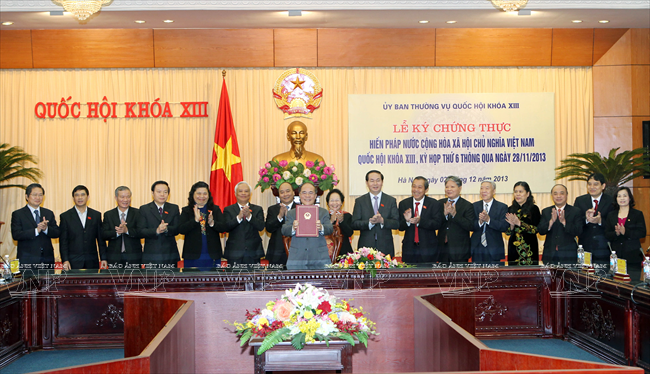
On December 2, 2013, National Assembly Chairman Nguyen Sinh Hung, Chairman of the Drafting Committee
for Amendment of the 1992 Constitution of the Socialist Republic of Vietnam
signs to certify the amended 1992 Constitution of the Socialist Republic of Vietnam. Photo: Nhan Sang – VNA
for Amendment of the 1992 Constitution of the Socialist Republic of Vietnam
signs to certify the amended 1992 Constitution of the Socialist Republic of Vietnam. Photo: Nhan Sang – VNA
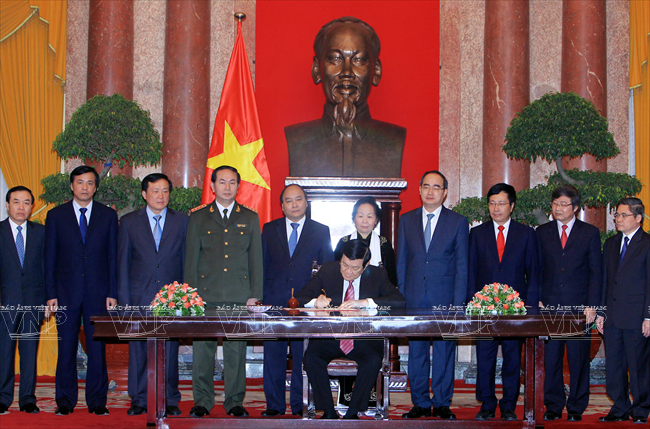
On December 8, 2013, at the Presidential Palace, State President Truong Tan Sang signs an order to promulgate the Constitution
of the Socialist Republic of Vietnam and a resolution stipulating the implementation of a number of points
in the Constitution. Photo: Nguyen Khang – VNA
of the Socialist Republic of Vietnam and a resolution stipulating the implementation of a number of points
in the Constitution. Photo: Nguyen Khang – VNA
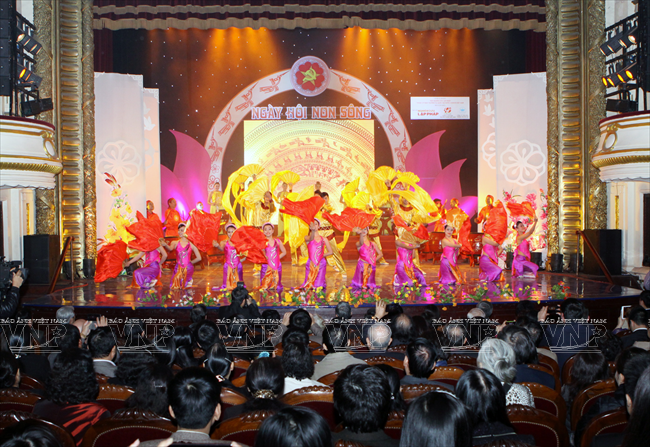
The artistic programme entitled “The Festival of the County” is held to celebrate the approval of
the amended Constitution of the Socialist Republic of Vietnam. Photo” Nguyen Dan – VNA
the amended Constitution of the Socialist Republic of Vietnam. Photo” Nguyen Dan – VNA

Party General Secretary Nguyen Phu Trong attends and addresses the conference on summing up
the activities of the Drafting Committee for Amendment of the 1992 Constitution
of the Socialist Republic of Vietnam. Photo: Nhan Sang – VNA
the activities of the Drafting Committee for Amendment of the 1992 Constitution
of the Socialist Republic of Vietnam. Photo: Nhan Sang – VNA
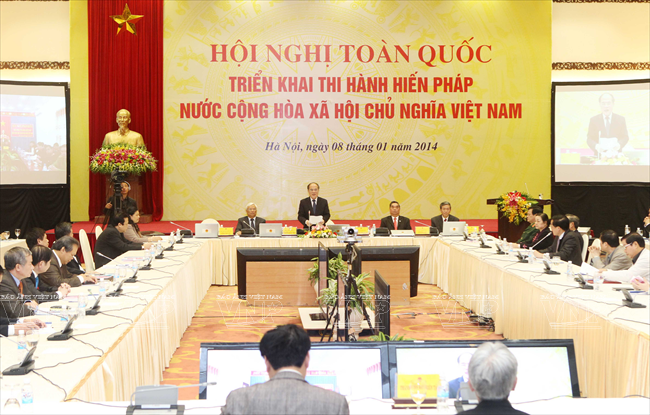
On January 8, 2014, National Assembly Chairman Nguyen Sinh Hung chairs the opening ceremony of
the National Conference on implementation of the amended Constitution of the Socialist Republic of Vietnam. Photo: Nhan Sang – VNA
the National Conference on implementation of the amended Constitution of the Socialist Republic of Vietnam. Photo: Nhan Sang – VNA
By VNA/VNP
bdAnh

